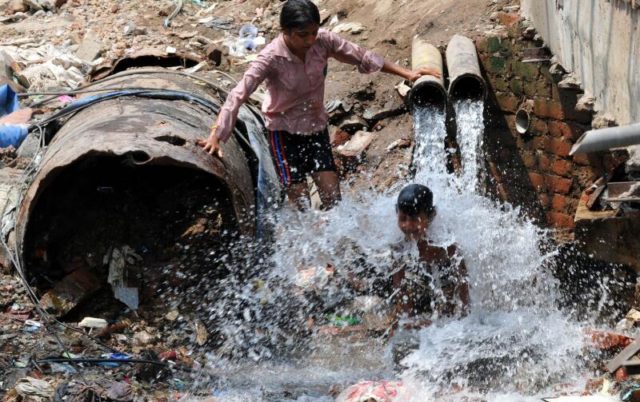Meteorologists warning of a record-breaking ’heat dome’ became a reality toward the end of April and the beginning of May.
OVER a billion people have faced relentless heatwaves in India and Pakistan over the last few weeks, with temperatures clocking in at 49°C in areas along the border of the two countries.
Meteorologists’ forecasts warning of a record-breaking “heat dome” became a reality toward the end of April and the beginning of May. Although high temperatures are not unusual for the Indian sub-continent around this time, meteorologists and climate experts say that it has been much hotter than average since early March, with many linking this as a direct result of climate change.
Increasingly intense heatwaves in India have been a death sentence for scores of the country’s poorest and most vulnerable people every year. Rickshaw drivers, street vendors, manual labourers and the homeless are at the greatest risk of heat exhaustion and heatstroke. The 2015 heatwaves, India’s worst since 1992, killed at least 2,081 people.
“Well-off people will have air-conditioners in their homes and offices, but here in New Delhi people like gardeners and those who work in the open areas will survive in such heat?” gardener Prem Kishore told the Associated Press in April.
Last week an important bridge was washed away after being battered by flash floods in northern Pakistan. The flash floods were caused by rapidly melting glacial ice sheets.
The rapid melt was a direct result of the recent heatwave and released huge amounts of water into streams and surrounding areas, local media reported.
Experts are saying the water volume at the Shisper glacier lake has increased by 40% over the past 20 days due to unusually high and abrupt temperature rises in the north of the country which resulted in Pakistan recording its hottest April in decades, with Jacobabad hitting 49°C.
Rapidly melting glaciers have created more than 3,000 glacial lakes in the northern areas of Pakistan, with 33 of these lakes at risk of bursting if the melting continues. This would lash areas below with dangerous volumes of water and mud placing countless lives at risk.
“A compact bridge would be temporarily installed to restore traffic,” while construction of a permanent bridge would take about seven to eight months, National Highway Authority chair Muhammad Khurram Agha said, according to Gulf News.
In the event of a high-pressure system remaining over the same area for days or sometimes weeks, a heat dome is formed. This traps warm air underneath like a lid on a pot. The one that formed over the Indian sub-continent is what sent temperatures over the 40°C mark.
On Tuesday, April 26, the mercury shot up to 47°C in Dadu, Pakistan. Along with an area in Senegal, this proved to be the joint highest temperature in the Northern Hemisphere this year.
Worshippers experienced soaring temperatures of 41°C along the banks of the River Ganges in Varanasi, Uttar Pradesh.
Meteorologist Scott Duncan tweeted that the worst is yet to come, with some cities expected to approach 50°C. “This heatwave is going to have an impact on more than 10% of the entire population of the planet,” he says.








